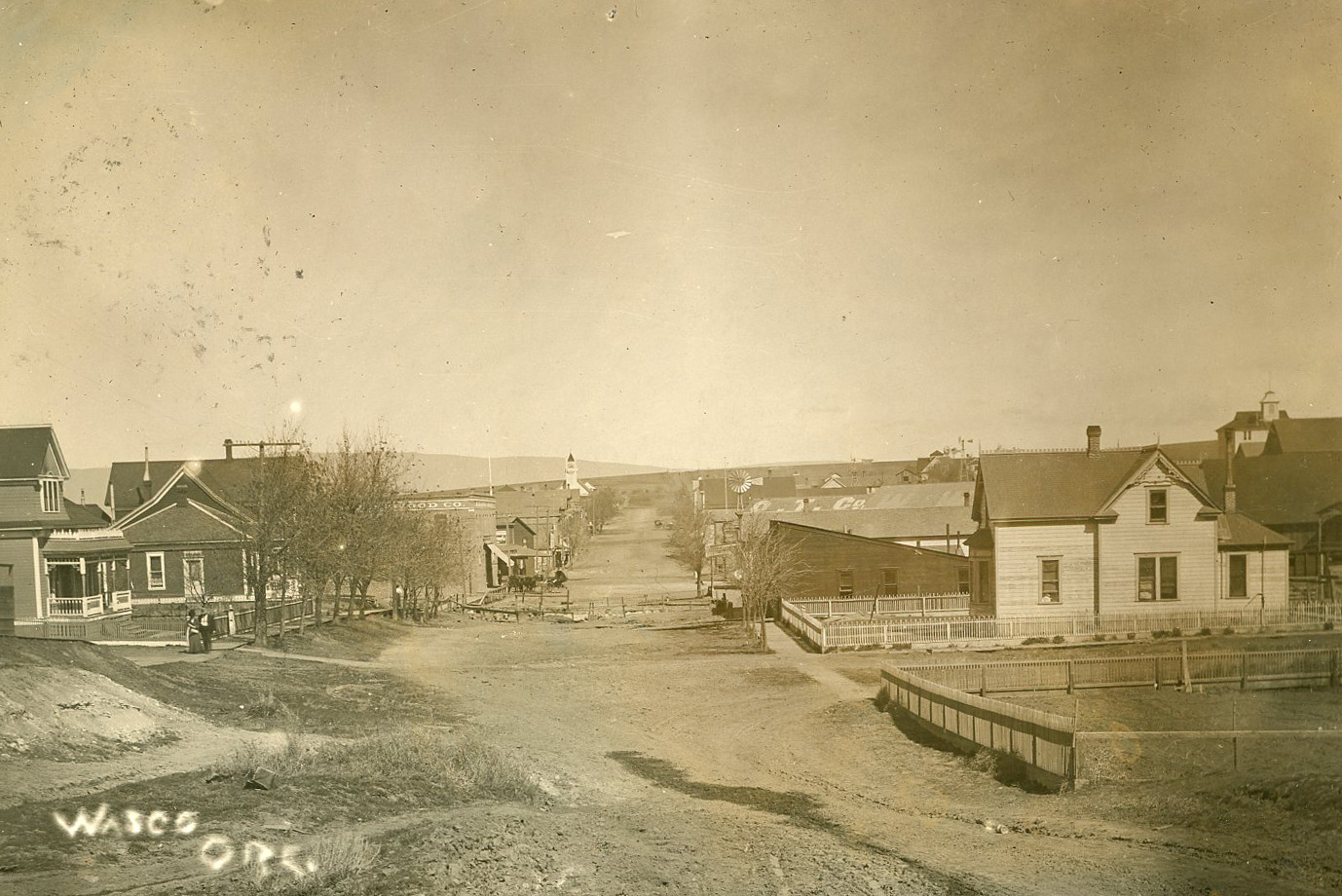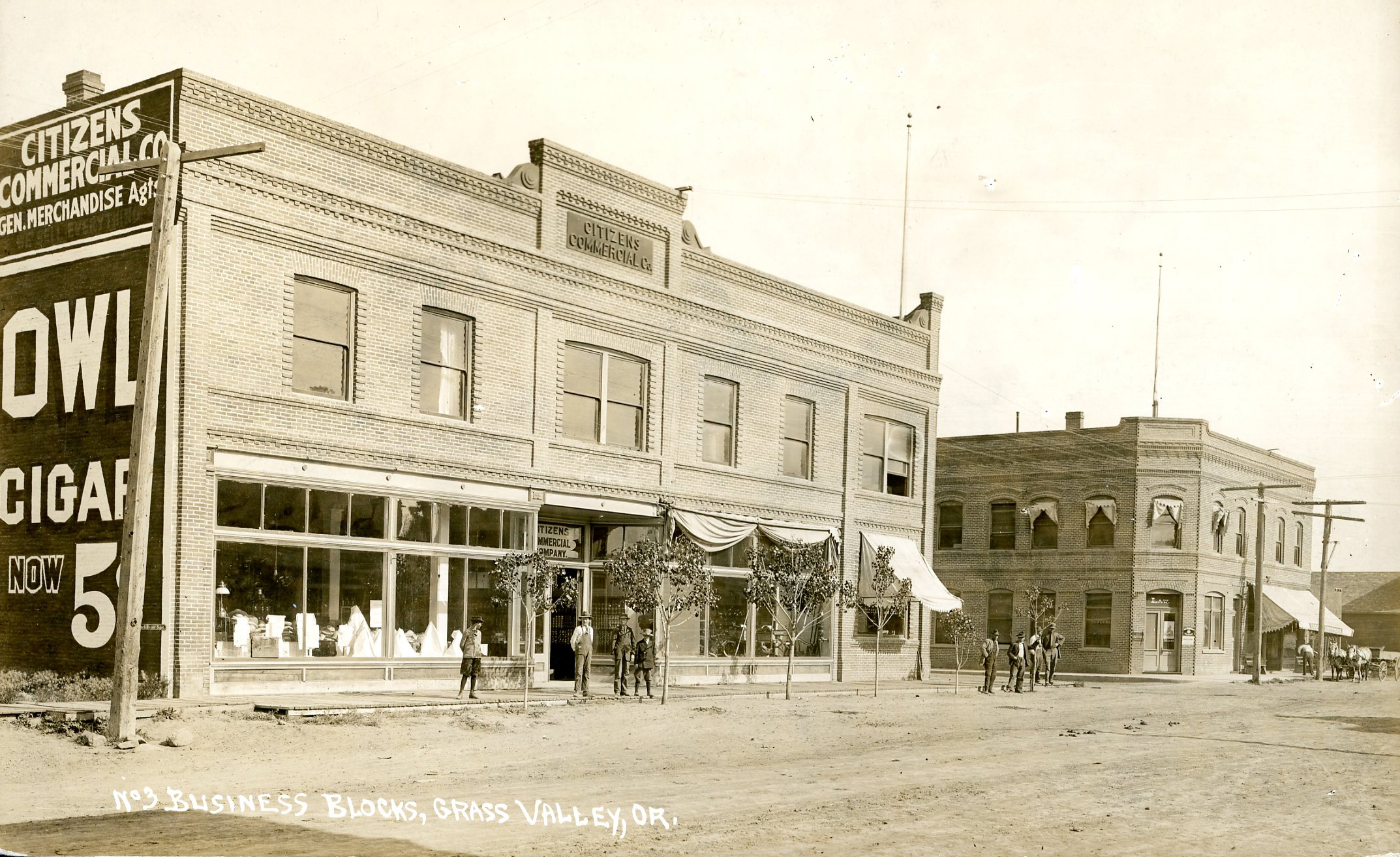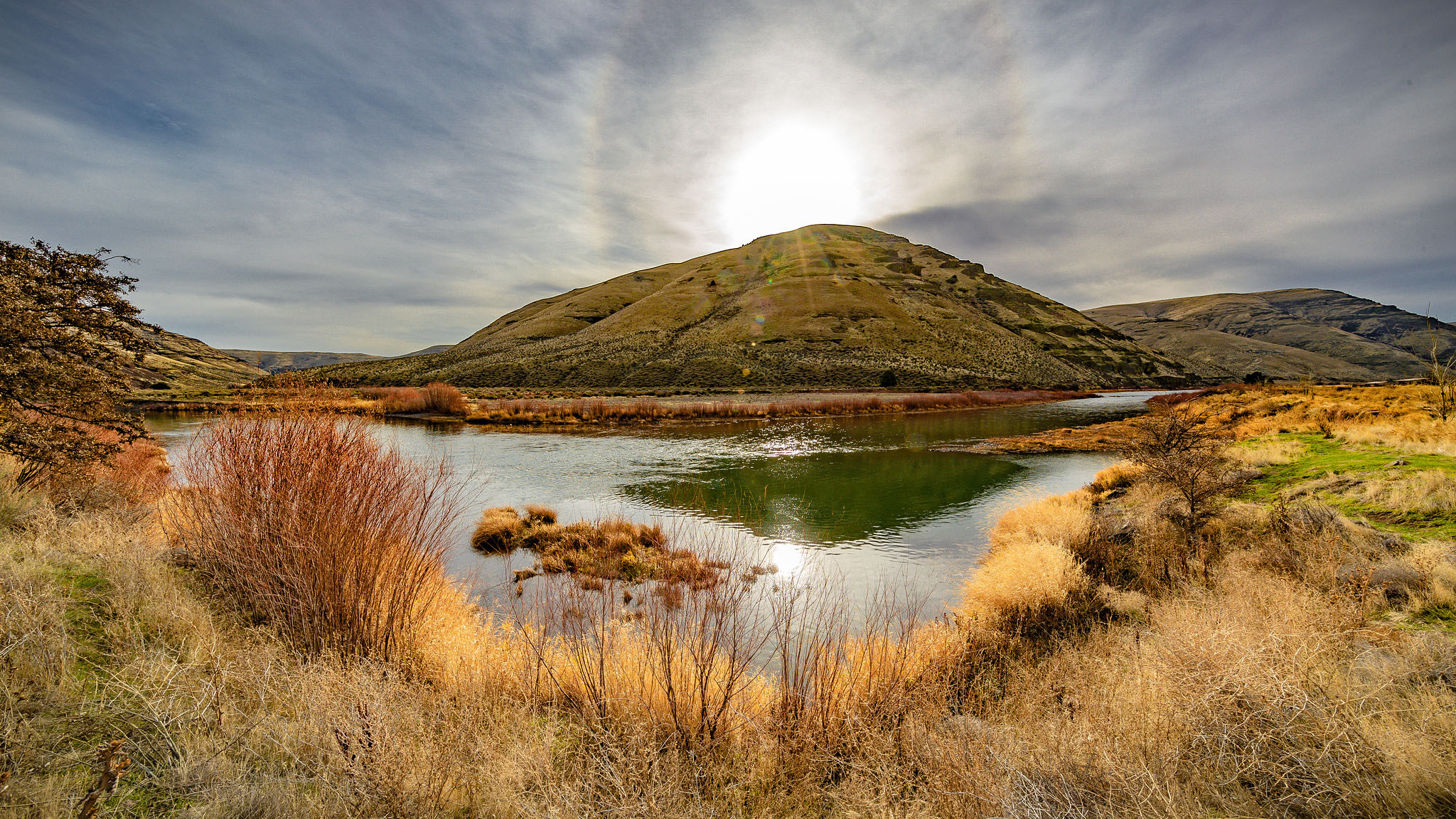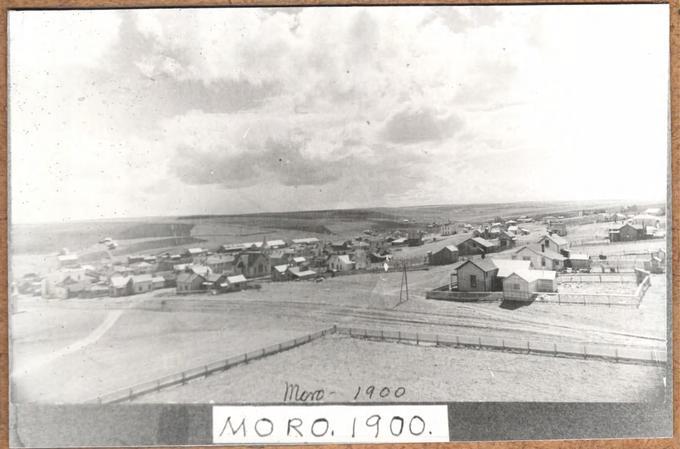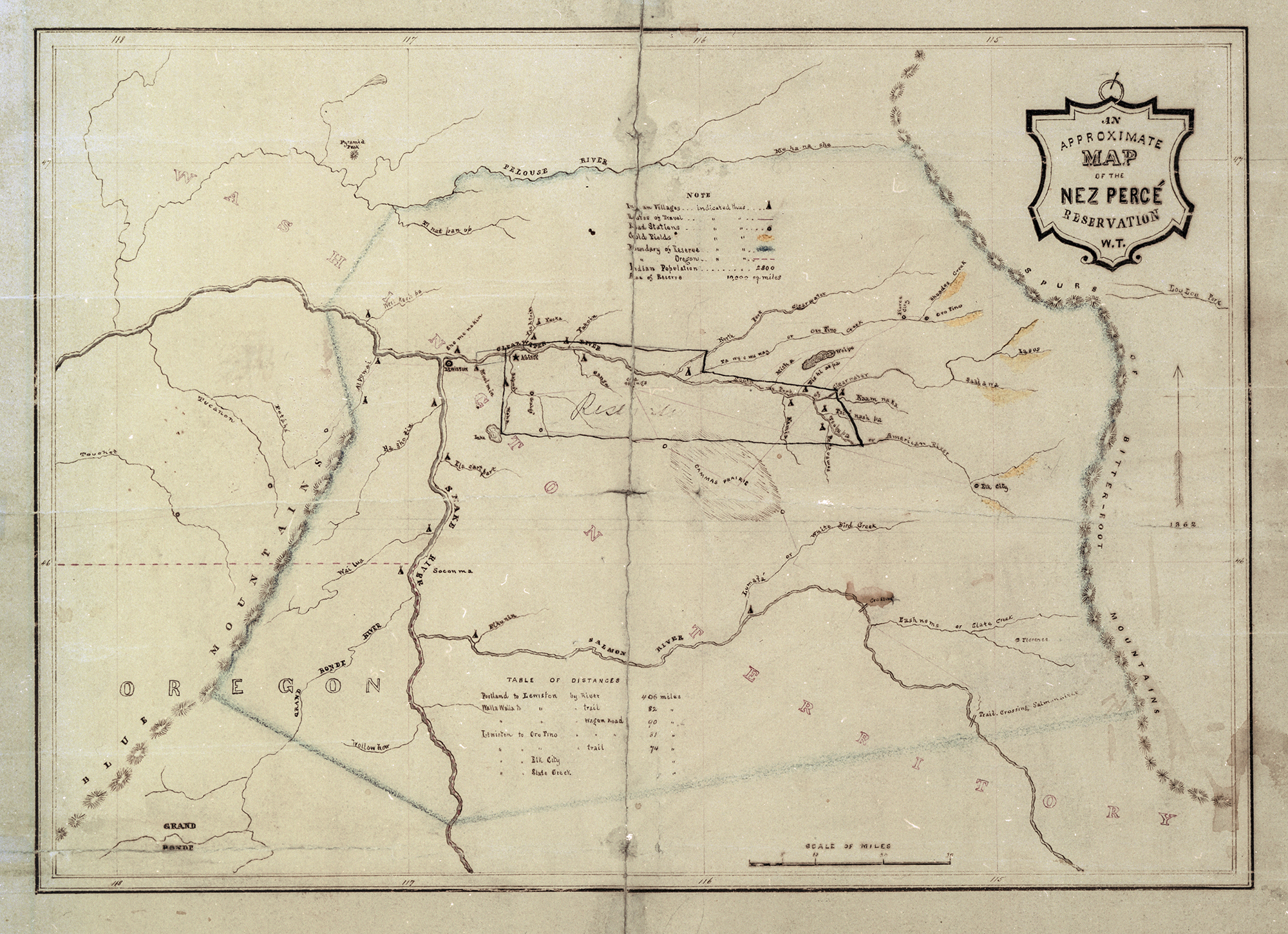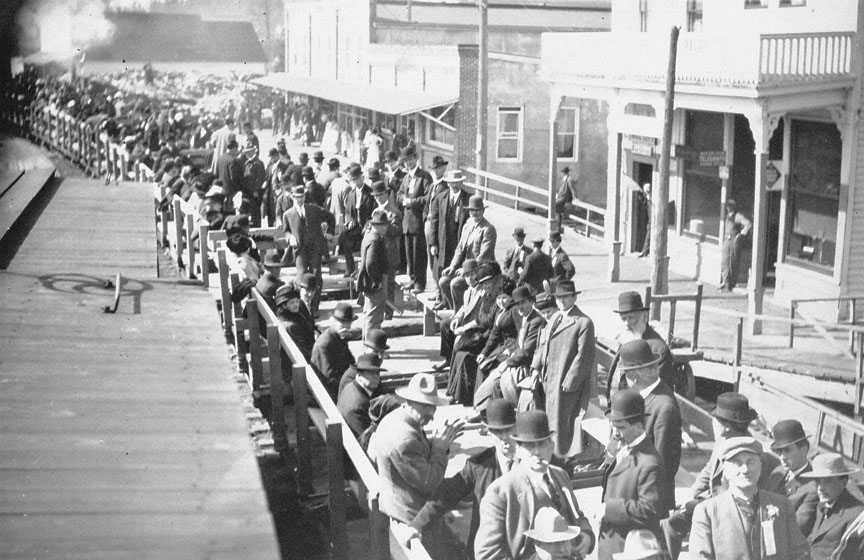Wheat farming, ranching, and wind turbines drive the economy of the small town of Wasco, in Sherman County, about nine miles south of the Columbia River in north-central Oregon. Wasco is known for its proximity to the Oregon Trail, which emigrants traveled a mile and a half to the north of town. With a population of about 425 people in 2020, it is the largest town in Sherman County.
Wasco is named after Wasco County, which was named for an eastern Kiksht-speaking tribe who lived for millennia on the banks of the Columbia River near present-day The Dalles. The Wascos, including the bands of Ki-gal-twal-la (The Dalles) and Dog River (now called the Hood River Wasco), fished for salmon on the Columbia and hunted and gathered between the Deschutes and John Day Rivers. The Wascos are now members of the Confederated Tribes of the Warm Springs.
White emigrants and miners began the resettlement of the region during the 1870s. In 1870, Jesse Eaton was named the first postmaster at Spanish Hollow, a post office located a mile and a half north of the current location of the town. He planted the first grain in the region—rye, in 1875—and offered his homestead as a stopping place for travelers. The post office was renamed Wasco in 1882 and was moved to the town of Wasco in 1900.
By 1883, the McPherson, Armsworthy, and Dunlap families had laid out claims to land in Wasco and had begun constructing houses and opening businesses. The town was the temporary county seat of Sherman County from 1889 to 1892, until the seat moved to Moro. Wasco was incorporated on April 14, 1898, and during the next decade lumber suppliers, blacksmiths, and harness and saddle shops prospered by provisioning ranchers and farmers in the region. The Farmer’s Co-operative Warehouse Company, established in the 1890s, allowed famers from the southern part of the county to take their wheat to Wasco, where it could be stored and then transported by wagon to Biggs, a railroad and river barge hub on the Columbia River.
In 1897, the Columbia Southern Railroad began constructing a line from Biggs south to Shaniko. In October of that year, the town celebrated the completion of the line to Wasco and the opening of the Columbia Southern Railroad Passenger Station and Freight Warehouse. Those buildings currently house the Wasco Railroad Depot and Museum and are on the National Register of Historic Places. With improved access to markets, new businesses developed, including the North Pacific Flouring Mills, which began milling flour from Wasco farms in 1898. The railroad made it possible to easily move wheat, barley, and livestock to the Columbia River for transport. Between 1910 and 1920, Wasco’s population rose from 386 to 701, an 81 percent increase due almost entirely to the railroad.
With the mechanization of agriculture and the construction of the Oregon Trunk Railroad as the primary railway artery along the Deschutes River in 1911, combined with the effects of the Great Depression, Wasco’s economic growth and population declined as farmers left the region for work in urban areas. Between 1920 and 1930, the town’s population dropped from 701 to 400, where it has remained ever since. The Columbia Southern Railroad quit service in 1936 and abandoned the rail line in 1966. Even then, Wasco continued to produce and truck wheat to grain elevators on the Columbia at a rate equal to that it had achieved in the early twentieth century. The area's topography, soil, and weather patterns allow for a wheat production greater than the southern part of Sherman County, and the town weathered the economic ups and downs of the late twentieth century through the dependable production of wheat.
While wheat farming continues to be an important staple of the local economy, other important sectors of Wasco's economy today include construction, retail, and education. Wind farming is making a literal mark on the land. Iberdrola’s Klondike III Wind Project, which began operating in 2007, has over a hundred and fifty wind turbines. The same year, Portland General Electric opened its first wind farm at Biglow Canyon Wind Farm, located about ten miles northeast of Wasco, which produces 450 megawatts of electricity and has over two hundred turbines on 25,000 acres.
Wasco is a jumping-off point on Travel Oregon’s Journey through Time Scenic Byway (Highway 97), which encourages travelers to explore nearby attractions such as Gordon Ridge and the Oregon Trail crossing of the John Day River.
-
![]()
Wasco, Oregon, 1910.
Oregon Historical Society Research Library, 57331, photo file 1096B
-
![]()
Business block, Wasco.
Oregon Historical Society Research Library, 18917, photo file 1096B
-
![]()
Downtown Wasco.
Oregon Historical Society Research Library, 18921, photo file 1096B
-
![]()
Wasco, Oregon.
Oregon Historical Society Research Library, 18901, photo file 1096B
-
![]()
North Pacific Flour Mill, Wasco, Oregon, 1898.
Oregon Historical Society Research Library, 45712, photo file 1096B
-
![]()
Western Hotel, Wasco.
Oregon Historical Society Research Library, 18904, photo file 1096B
-
![]()
Wasco depot.
Oregon Historical Society Research Library, 18906, photo file 1096B
-
![]()
Main Street, Wasco.
Oregon Historical Society Research Library, 18909, photo file 1096B
-
![]()
Methodist Church, Wasco.
Oregon Historical Society Research Library, 18911, photo file 1096B
-
![]()
Birdseye view of Wasco, Oregon.
Oregon Historical Society Research Library, 18899. photo file 1096B
-
![]()
Sherman Hotel, Wasco.
Oregon Historical Society Research Library, 18923, photo file 1096B
-
![]()
Barnett Bank, Wasco.
Oregon Historical Society Research Library, 18925, photo file 1096B
-
![]()
Main Street, Wasco.
Oregon Historical Society Research Library, 18924, photo file 1096B
Related Entries
-
![Grass Valley]()
Grass Valley
Early EuroAmericans traveling through north-central Oregon just east of…
-
![John Day River (north-central Oregon)]()
John Day River (north-central Oregon)
The 281-mile-long John Day River in north-central Oregon is the longest…
-
![Moro]()
Moro
The town of Moro, the county seat of Sherman County, is located about e…
-
![Native American Treaties, Northeastern Oregon]()
Native American Treaties, Northeastern Oregon
After American immigrants arrived in the Oregon Territory in the 1840s,…
-
![Oregon Trail]()
Oregon Trail
Introduction In popular culture, the Oregon Trail is perhaps the most …
-
![Shaniko]()
Shaniko
No town in Oregon has seen more rapid growth and decline than Shaniko, …
-
![Sherman County Courthouse]()
Sherman County Courthouse
The Sherman County Courthouse in Moro is one of only three county court…
Related Historical Records
Map This on the Oregon History WayFinder
The Oregon History Wayfinder is an interactive map that identifies significant places, people, and events in Oregon history.
Further Reading
Due, John F. and Giles French. Rails to the Mid-Columbia Wheatlands: The Columbia Southern and Great Southern Railroads and the Development of Sherman and Wasco Counties, Oregon. Washington D.C.: University Press of America, 1979.
Due, John F. “The Effects of Railroad Abandonment on Agricultural Areas: A Case Study.” Illinois Agriculture Economics 15.2 (July, 1975): 14-22.
French, Giles. The Golden Land: A History of Sherman County, Oregon. Portland: Oregon Historical Society, 1958.

